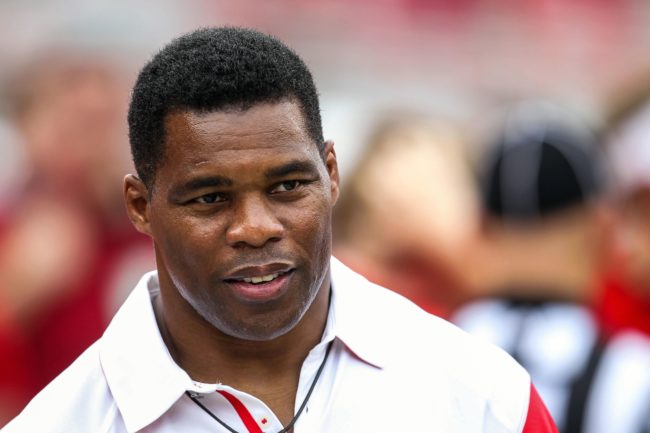How the SEC affected the most famous NFL trade of all-time
Herschel Walker for Emmitt Smith is bar-none the most famous (or infamous, depending on who you ask) trade in NFL history. It wasn’t proposed as a Walker-for-Smith deal, but that’s how it will always be remembered.
And somehow, it all ties back to our beloved SEC, the breeding ground for the two star backs who would reshape professional football in the aftermath of this legendary deal.
The trade itself, which took place about six weeks into the 1989 NFL season, actually involved more than a dozen current and future players between the Cowboys, for whom Walker played at the time, and the Minnesota Vikings, who coveted the former Georgia Heisman winner more than any other player in the league.
That’s why Minnesota offered Dallas not just a couple players and a couple picks, but five players and eight draft picks (including three first-rounders and three second-rounders) in exchange for Walker and four picks (all from the third round and on).
At the time, the national consensus among fans and reporters alike was that Minnesota had just ripped off Dallas in a historic manner. It was as if they’d stolen the Cowboys’ lunch and their lunch money. The word “robbery” was used to describe the trade, and former University of Miami coached turned Cowboys head man Jimmy Johnson was on the cusp of being chased out of the NFL and back to the college game.
But Johnson knew he’d made the right move, mainly because of what Walker did in the SEC. Walker is the greatest tailback in the history of the conference in the eyes of many, but as a result he was also utilized more than any other back in the country during his three-year college career. He carried the ball more than 1,000 times during those three years, and that wear and tear could not be undone.
Walker then went to play in the USFL, a brief rival of the NFL in the 1980s, where he carried the ball even more frequently than in college due to the USFL’s 18-game schedule. When he finally arrived in the NFL as a member of the Cowboys in 1987, his yards per carry averaged dropped from 4.9 yards per attempt in the USFL to 4.3 to 4.2 to eventually a putrid 3.0 in the early stages of the ’89 season. Despite a 1,500-yard season in 1988, he’d begun to show subtle decline that only Johnson seemed to notice.
Johnson knew he had to make a move to rebuild a depleted Cowboys roster, and that move would likely involve trading a blue-chip player for a large haul in return. So when Minnesota offered six picks in the first two rounds of the next few drafts, Johnson knew he could use an aging back who left his best days in Athens and a defunct NFL competitor as a means by which to build a new foundation for his team.
That team got even worse in the short-term without Walker, which is why it was considered such a foolish move that many thought would undo the Dallas franchise. Rookie quarterback and 1989 No. 1 overall pick Troy Aikman struggled with Walker and struggled even more without him, closing the year with an awful 1-15 record.
But Aikman wasn’t alone on the Cowboys offense for long. Dallas packaged two of the picks Minnesota had traded it to move up three spots in the 1990 draft to take Emmitt Smith out of Florida. Together, Aikman and Smith won three Super Bowls with Dallas, turning Johnson from a nitwit into a genius.
So what did Johnson see in Smith that he didn’t in Walker? Again, you’ll have to venture back to Smith’s days in the SEC as a former Florida Gator. Although he was an All-American in 1989, Smith was never the kind of national sensation Walker quickly became at Georgia. As a result, he ran for more than 3,900 career yards that went under-appreciated as he prepared for the draft. Smith had run for at least 5.3 yards per carry in each of his three seasons at Florida, and he logged more touchdowns than games played (36 in 33 games). The best part? He did all that in 300 fewer carries than Walker received as a Bulldog.
So when Smith was preparing to enter the league as a rookie, Johnson thought he or another productive college tailback entering the league with fresh legs would be better-suited for his rebuilding job than Walker.
He eyed Smith in the coming draft class, made the trade in the middle of the ’89 season to move Walker, made another trade using some of the Walker picks to take Smith, and as they say, the rest is history.
If Smith had carried the ball more or been asked to do more at Florida, he might have become a comparable iconic figure to Walker, but he also might not have had the longevity he did in the NFL. Instead, he closed his career having amassed more yards than any player ever, while Walker only ran for more than 1,000 yards once in his last nine NFL seasons.
Hindsight is 20-20, but Johnson was the only man with the foresight to take a risk on a college back in lieu of an established NFL star with nothing around him and a lot of carries behind him. The principle is now established in modern football culture at both the college and pro levels, and this trade is a huge reason for that.
And that, boys and girls, is how the most famous trade in professional football history incorporated the college careers of a pair of SEC legends. The conference has former stars littered on every NFL roster, but it never affected the league like this. And there’s a good chance it never will again.

